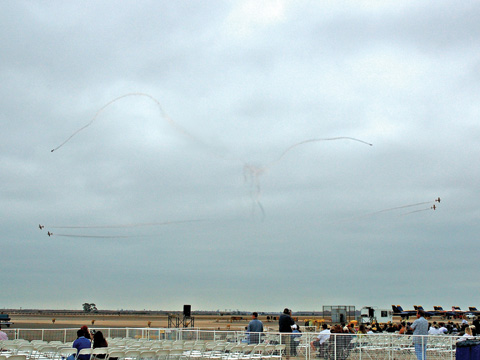art.308:sculpture studio
hannah piper burns
project 1- process
artist research
Cai Guo-Qiang, Joseph Beuys
Cai Guo-Qiang
Much of Cai Guo-Qiang’s works are performative and time-specific- that is, they are tied to the moment in which they are made. One can see a series of pictures of fire melting enormous ice structures, or planes leaving vapor trails that look like Chinese landscape paintings, but it does not compare to the physical event itself. The finished product of “Caressing Zaha with Vodka” (2004) is a puddle, or at least a partially melted structure. It is the physical ACT of the fire meeting the alcohol meeting the solid state of water, and that solid state subsequently becoming a liquid state, that is the art. The piece is not static- it is in constant flux, from the height of the flame to the stream of water to the size and shape of the ice and snow structures. Like some of Hamilton’s work, “Caressing Zaha with Vodka” is also about the physical act of bringing together dualities or opposites. In Hamilton’s piece it is saturated color and Braille, and in “Caressing” it is fire and ice, fire and water, and water (which freezes) and vodka (which does not). Likewise, “Painting the Chinese Landscape Painting” juxtaposes spirituality and technology, and actually seems to reconcile them. It is this reconciliation, rather than the end product (which is vaporous and transient), that is the significant aspect of the work.
Additionally, Cai Guo-Qiang has done a significant amount of large-scale work involving gunpowder, work he calls "Project for Extraterrestrials". Process is extremely significant in these works, as they involve extensive plannning and consideration for safety. The process of setting up these pieces for detonation contrasts momentously from the presentation of the works- often the duration of the work is mere minutes. The title 'Project for Extraterrestrials" locates his audience as an intangible "other", located literally above the human experience, which makes the explosions seem like an offering, and the laying of gunpowder ceremonial. Just as Serra endeavors to become godlike in his manipulation of monumental forms and transcendence of gravity, Cai Guo-Qiang is like a wizard or priest performing a ritual of worship or summoning. The moments in which the work is detonated are therefore spiritual, transcendent ones. They, like the previously mentioned work, deal with the transformation of materials (in this case powder to fire), and so process in Cai Guo-Qiang's work is focused mainly on the creation of situations in which these transformations can occur.
Joseph Beuys
Joseph Beuys’ work focuses on process as a way to upend the status
quo of the art world, which focuses on the “final product”
as just that- a product, a commodity to be bought and sold, gazed at and
appreciated. Beuys’ performances and works are about defying stasis
and rejecting the codified norms of art making. By forging into new psychological
territory through experiments in process, Beuys challenges the notion
of sculptures as “objects” by transforming his body, his memories
and past, and his internal inquiries into sculptures themselves.
A denial of traditional aesthetics is central to Beuys’ artistic
endeavor. By using materials for their symbolic value as connected to
his past, such as the felt and fat he contends saved his life when shot
down over the Crimean sea, rather than for their aesthetic value (and
one can argue that fat has very little traditional aesthetic value), he
creates works that are fundamentally tied to him and therefore not able
to stand alone as art objects. By utilizing the materials that saved his
life, he is constantly in the process of remembering and revisiting that
point in time- the materials are utilitarian rather than aesthetic, utilitarian
in their role of Beuys' psychological processes and inquiry.
Beuys also views society as a whole as sculptural in nature, and humans
collectively as artists upon that sculpture, which therefore is never
static, but in a constant state of change and alteration. He approved
of a more socialist, rather than capitalist, societal evolution.
Like Cai Guo-Qiang, many elements of Beuys' work deals with the process of transformation, as manifested on several levels. For example, "7000 Oaks" (1982-7) was a five year process of transforming the city of Kassel, Germany (his material) by adding trees to the urban environment. The completion of the project actually set in motion another process wherein the ecosystem was altered by the trees' presence, a process which has an indeterminable end or outcome. While Bueys was extremely interested in transforming society, he also strove to achieve personal transformation. By placing himself in a room with a coyote, he treated both himself and the coyote as materials to be altered in reaction to each other. The piece, therefore, became about this alteration: While in the same room, the dynamic between the two materials remained in constant flux, as both parties were forced to learn to cohabitate.
There is also a significant ritualistic aspect to Beuys' work. By using materials such as fat and felt over and over, he elevated their status to ritual objects, chosen for their significant presence in his transformation earlier in life. Rituals are often performed as a remembrance or as a way to pay homage to the past by recreating it repeatedly, and indeed Beuys ritually used felt and fat to these ends, engaging in the process of both elevation and transformation of himself through the ritual of manipulating them. Also, the sheer number of trees planted for the duration of "7000 Oaks" pushed the process of planting into the realm of ritual as well, a ritual to achieve growth and give back to the Earth what was taken so that society could flourish.
St. Mary's College of Maryland
St. Mary's City MD 20686-3001
Back to Index
This page was last updated: March 28, 2005 4:34 PM


